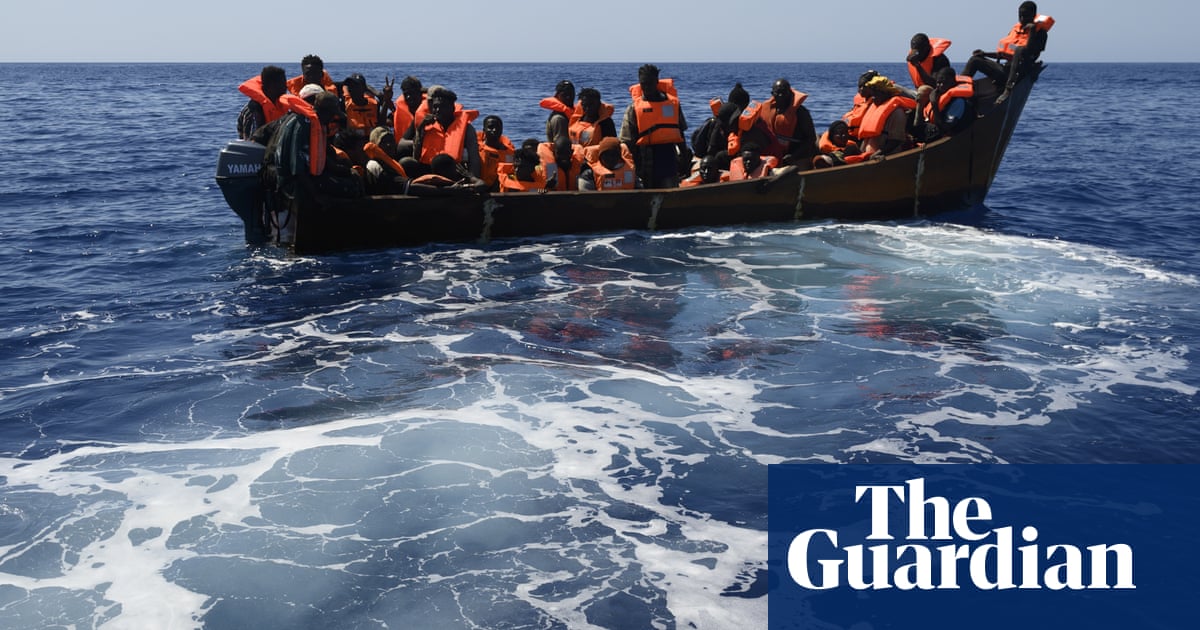
The number of people taking the world’s deadliest migratory route – across the central Mediterranean – to reach the EU has more than doubled, driving irregular crossings at the bloc’s external borders to their highest level in seven years.
As migration returns to the top of Europe’s political agenda, including in Britain, Europe’s border and coast guard agency said on Friday irregular arrivals had risen by 13% between January and July to 176,100, the highest number for the period since 2016.
Frontex said the increase was entirely driven by a 115% rise in the number of people using the “central Mediterranean” route, which is now the main migratory route into the EU and accounts for more than half of all EU border detections.
Many, however, do not make it. According to data from the UN’s International Organization for Migration, so far in 2023 more than 2,090 people have gone missing in the Mediterranean, mostly on the central route.
The route, from Libya or Tunisia northward to Greece or Italy, can take several days, is often made in unseaworthy, dangerously overloaded boats, and was used successfully by more than 89,000 people in the first seven months of 2023, Frontex said.
At least 41 are believed to have died last week when a boat sank off the Italian island of Lampedusa. Four survivors said the rusting vessel, whose passengers included three children, had set off from the Tunisian port of Sfax six days previously.
In June, an ageing and overcrowded fishing trawler believed to have been carrying up to 750 people sank in international waters off Pylos on the west coast of Greece, four days after setting sail from eastern Libya. Only 104 people were rescued.
Nonetheless, Frontex said, “migratory pressure” on the central Mediterranean route looked likely to keep rising as smugglers were “offering lower prices to migrants departing from Libya and Tunisia amid fierce competition among criminal groups”.
Arrivals on all other main migratory routes into the EU had declined from a year ago, the agency said, with falls ranging from 2% on the western Mediterranean route (from Morocco to Spain) to 29% on the eastern Mediterranean route from Turkey to Greece.
The western Balkan land route, onward through North Macedonia and Serbia to Croatia, Slovenia and Hungary, remained the second most active, but the 52,200 crossings detected represented a steep 26% decline on the same seven-month period last year.
For July, the agency said nearly 42,700 irregular border crossings were detected at the EU’s external borders, a 19% increase over the same month in 2022 and the highest total since March 2016, at the end of Europe’s 2015 migration crisis.
Frontex said the number of Channel “exits towards the UK” from France stood at close to 5,500 in July, bringing the total for the first seven months of 2023 to almost 27,300 – a 2% decline on the same period last year. According to UK government figures, 15,826 people had arrived via the Channel as of 10 August this year, 15% fewer than by the same time last year.
While the number of people trying to reach Europe remains well down on the 2015-16 peak, the number is climbing sharply and anti-immigration sentiment and political pressure are on the rise across the continent, including in Britain.
After years of intense bickering, deeply divided EU member states this year hailed a breakthrough in negotiations on a new migration and asylum pact, including charges of €20,000 (£17,200) a head for member countries that refuse to host refugees.
The bloc agreed that member states, rather than the EU as a whole, would determine which countries were considered “safe” for people turned away because they were ineligible for asylum, giving member states greater individual flexibility.
The EU has also signed off on a €1bn “strategic partnership” with Tunisia that includes, besides economic investment, measures to disrupt the smugglers’ business model, strengthen border controls and improve the registration and return of people.
In the UK, the government has pledged to “stop the boats” through an immigration policy aimed at outlawing asylum claims by people arriving via the Channel and other “illegal” routes and transferring them to third countries, such as Rwanda.
The UN refugee agency condemned the passage through parliament last month of the government’s illegal migration bill as a “breach of international law” and said it would expose refugees to “grave risks”.
More than 45,000 people arrived in the UK on small boats in 2022, 60% more than in the previous year. Since Brexit, Britain is no longer part of any binding EU framework defining responsibility for asylum seekers or facilitating UK-EU transfers.












